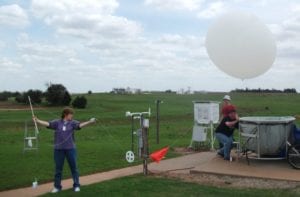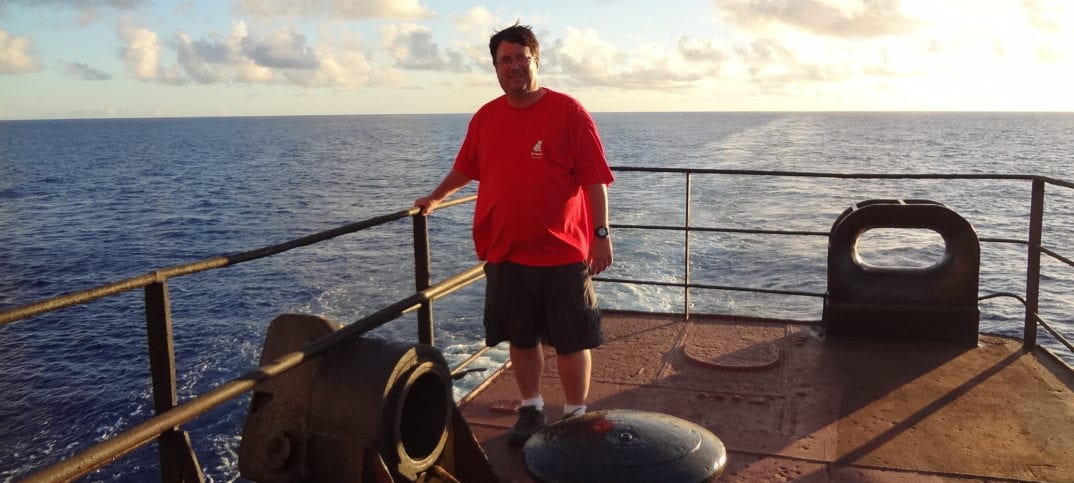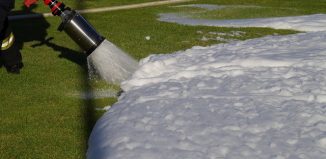By Daniel Dunaief
They often seem to arrive at the worst possible time, when someone has planned a picnic, a wedding or an important baseball game. In addition to turning the sky darker, convective clouds can bring heavy rains and lightning.
For scientists like Michael Jensen, a meteorologist at Brookhaven National Laboratory, these convective clouds present numerous mysteries, including one he hopes to help solve.
Aerosols, which come from natural sources like trees or from man-made contributors, like cars or energy plants, play an important role in cloud formation. The feedbacks that occur in a cloud system make it difficult to understand how changes in aerosol concentrations, sizes or composition impact the properties of the cloud.
“One of the big controversies in our field is how aerosols impact convection,” Jensen explained in an email. “A lot of people believe that when a storm ingests aerosols, it makes it stronger, because there are changes to precipitation and particles in the clouds.”
This process is called convective invigoration, which could make it rain more.
Another group of scientists, however, believes that the aerosols have a relatively small effect that is masked by other storm processes, such as vertical winds.
Strong vertical motions that carry air, water and heat through the atmosphere are a signature of convective storms.
Jensen will lead an effort called Tracking Aerosol Convection Interactions Experiment, or TRACER, starting in April of 2021 in Houston that will measure the effect of these aerosols through a region where he expects to see hundreds of convective storm clouds in a year.

The TRACER team, which includes domestic and international collaborators, will measure the clouds, precipitation, aerosol, lighting and atmospheric thermodynamics in considerable detail. The goal of the campaign is to develop a better understanding of the processes that drive convective cloud life cycle and convective-aerosol interactions.
Andrew Vogelmann, a technical co-manager of the Cloud Properties and Processes Group at BNL with Jensen, indicated in an email that the TRACER experiment is “generating a buzz within the community.”
While other studies have looked at the impact of cities and other aerosol sources on rainfall, the TRACER experiment is different in the details it collects. In addition to collecting data on the total rainfall, researchers will track the storms in real time and will focus on strong updrafts in convection, which should provide specific information about the physics.
Jensen is exploring potential sites to collect data on the amount of water in a cloud, the size of the drops, the phase of the water and the shapes of the particles. He will use radar to provide information on the air velocities within the storm.
He hopes to monitor the differences in cloud characteristics under a variety of aerosol conditions, including those created by industrial, manufacturing and transportation activities.
Even a perfect storm, which starts in an area with few aerosols and travels directly through a region with many, couldn’t and wouldn’t create perfect data.
“In the real atmosphere, there are always complicating factors that make it difficult to isolate specific processes,” Jensen said. To determine the effect of aerosols, he is combining the observations with modeling studies.
Existing models struggle with the timing and strength of convective clouds.
Jensen performed a study in 2011 in Oklahoma that was focused on understanding convective processes, but that didn’t hone in on the aerosol-cloud interactions.
Vogelmann explained that Jensen is “well-respected within the community and is best known for his leadership” of this project, which was a “tremendous success.”
Since that study, measurement capabilities have improved, as has modeling, due to enhanced computing power. During the summer, Long Island has convective clouds that are similar to those Jensen expects to observe in Houston. Weather patterns from the Atlantic Ocean for Long Island and from the Gulf of Mexico for Houston enhance convective development.
“We experience sea breeze circulation,” Jensen said. Aerosols are also coming in from New York City, so many of the same physical processes in Houston occur on Long Island and in the New York area.
As the principal investigator, Jensen will travel to Houston for site selection. The instruments will collect data every day. During the summer, they will have an intensive operational period, where Jensen and other members of the TRACER team will forecast the convective conditions and choose the best days to add cloud tracking and extra observations.
Jensen expects the aerosol impact to be the greatest during the intermediate strength storms.
The BNL meteorologist described his career as jumping back and forth between deep convective clouds and marine boundary layer clouds.
Jensen is a resident of Centerport and lives with his wife Jacqui a few blocks from where he grew up. Jacqui is a banker for American Community Bank in Commack. The couple has a 22-year-old son Mack, who is a substitute teacher at the Harborfields school district.
Jensen describes his family as “big music people,” adding that he plays euphonium in a few community band groups, including the North Shore Community Band of Longwood and the Riverhead Community Band.
As an undergraduate at SUNY Stony Brook, Jensen was broadly interested in science, including engineering. In flipping through a course catalog, he found a class on atmospheric science and thought he’d try it.
Taught by Robert Cess, who is now a professor emeritus at SBU, the class “hooked” him.
Jensen has been at BNL for almost 15 years. Over that time, he said the team has “more influence in the field,” as the cloud processing group has gone from six to 18 members. The researchers have “expanded our impact in the study of different cloud regimes and developed a wide network of collaborations and connections throughout the globe.”
As for his work in the TRACER study, Jensen hopes to “solve this ongoing debate, or at least provide new insights into the relative role of aerosols and dynamics.”







